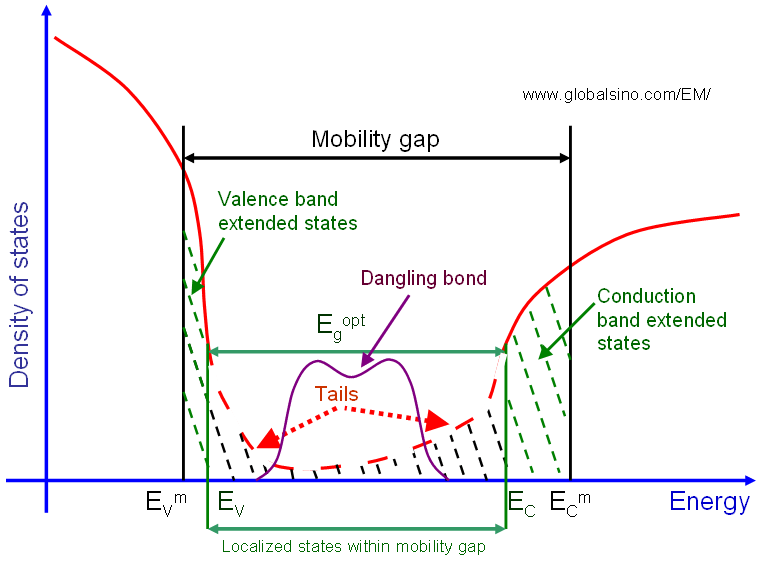=================================================================================
Different from crystalline silicon (Si), not all the atoms in amorphous Si (a-Si) are four-fold coordinated and a-Si has a significant distribution in bond lengths and bond angles. The deviation of the bond angles is ±10°. Some atoms have dangling bonds, resulting in unsaturated bands, and the dangling bonds can be charged (neutral, positive, or negative).
Hydrogen passivation in a-Si materials, a-Si:H (with ~7-13 at.% of H), is mostly in the form of Si-H bonds, either isolated or on the surface of small voids, and reduces the density of the dangling bonds by several orders of magnitude, leading to sufficient reduction of defects within devices. One typical application of a-Si:H is that it is used in TFTs with a large switching ratio (106) and a low OFF state current between the source and drain.
The Mott-CFO model in Figure 2392 presents the state densities. The "band tails", extending into the forbidden gap, present exponential slope of the density of states. The tails at the band edges are induced by the atomic disorder. The optical band gap (Egopt) is roughly equal to the mobility gap that separates the valence and conduction band mobility edges. The valence band tail determines the sub-bandgap absorption with the Urbach energy.

Figure 2392. Schematic illustration of density of states of a-Si:H. EVm and ECm are the mobility edges.
Table 2392a lists the electronic properties that are affected by structural disorders in amorphous and crystalline Si.
Table 2392a. The electronic properties affected by structural disorders in amorphous and crystalline Si.
Electronic properties |
Structural disorders |
|
Bonding disorder |
Electronic states in band gap
|
Structural defects |
Electronical, metastable states |
Alternative bonding configurations |
Note that the comparison of the properties between single, polycrystalline, and amorphous Si is listed in page2019.
|
